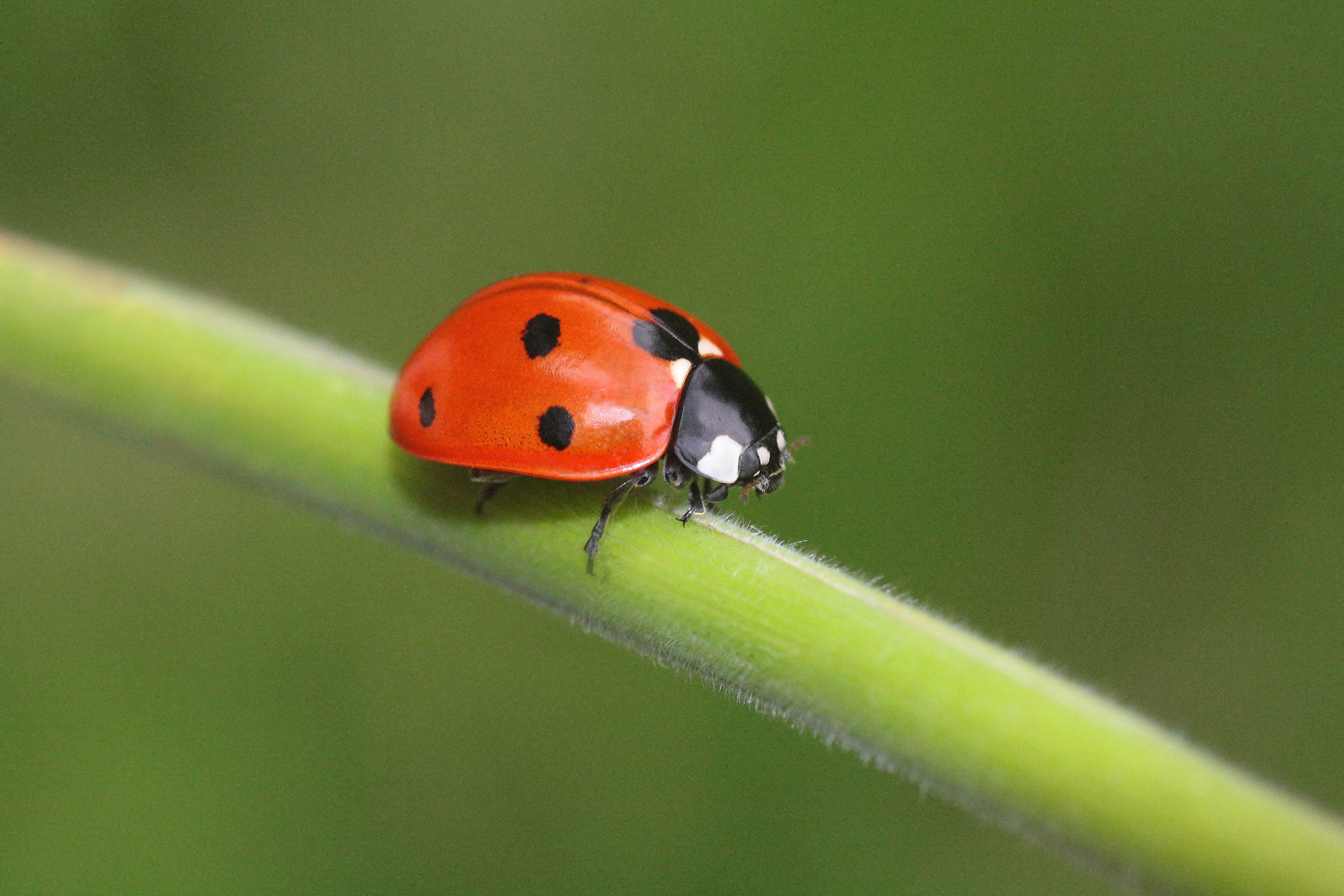DESCRIPTION: Up to 10mm. The quintessential happy ladybird with its black and white head and pronotum and the red elytra that are adorned with 7 black spots. The ground colour to the elytra can be occasionally yellow and the spots can vary in size and sometimes merge or separate. There is also a rare melanic form. The legs are always black. BEHAVIOUR: Adults overwinter and can be found alone or large congregations under bark, in gardens, forest edges and tucked away areas in the home. A threatened ladybird can play dead or release a nasty substance from its leg joints when in danger. Depending on the sex and diet the spot size and colouration can provide some indication of the toxicity of the individual. The larvae are voracious feeders of aphids and so this species is the ultimate 'gardener's friend'. DISTRIBUTION: A well distributed species throughout the UK with some years seeing a steep incline in records. HABITAT: Gardens, parks, hedgerows, woodland edges and coastal sites. In fact, anywhere where there is low herbage especially the good old Common Nettle. PERIOD: Adults can be seen all year round but are generally active from March to October.

